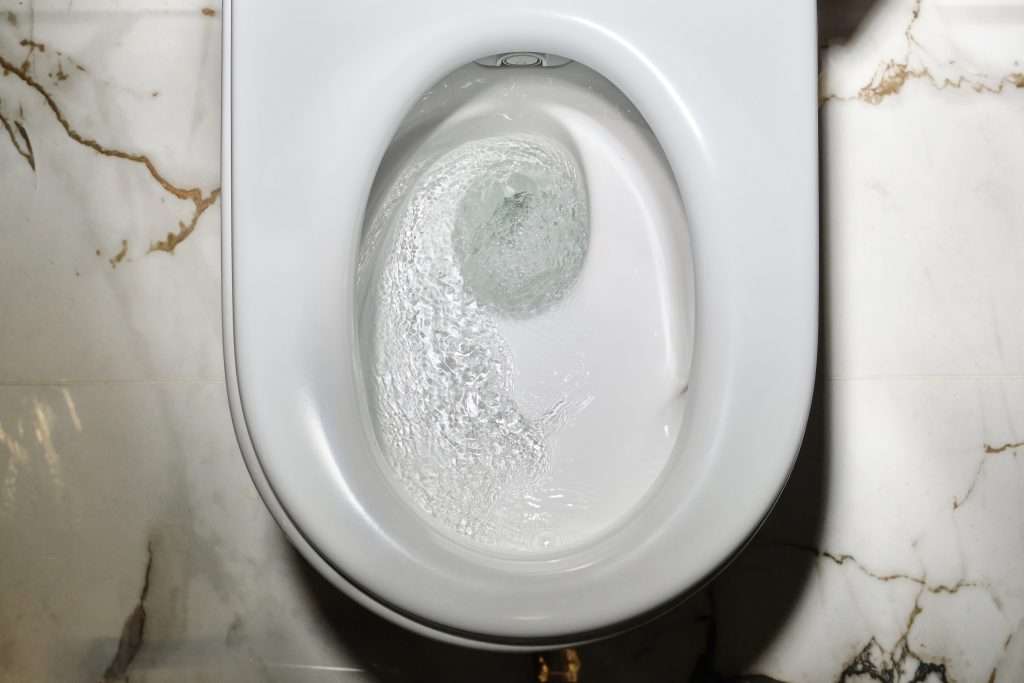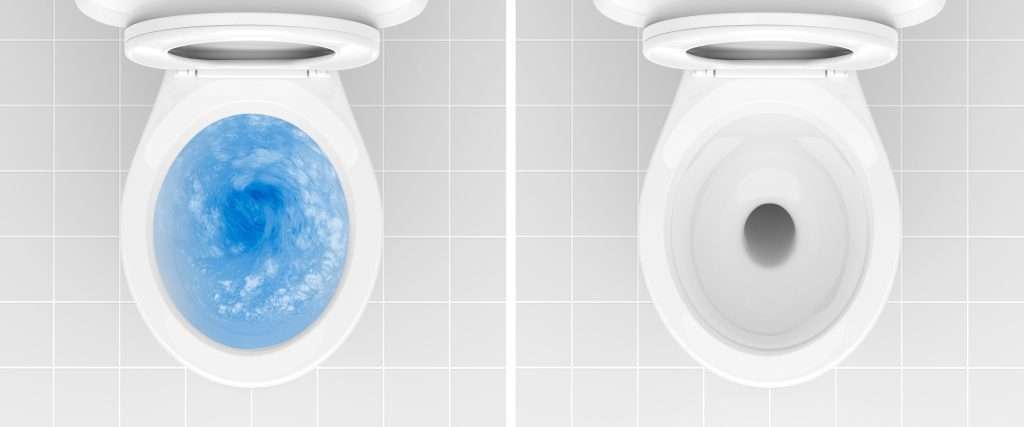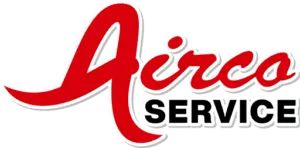Has your home’s toilet begun to show signs of decline? Unless you have general knowledge of toilets, you’re probably wondering how to fix your flush. That’s where we come in. Airco Service is going to help you boost your home toilet’s performance. After all, who doesn’t love a great toilet flush? Stop worrying about your toilet’s flush and read on.
Do I Really Need to Worry About Improving My Toilet’s Performance?
Like many appliances, your home’s toilet will break down over time. Months, even years, can go by without giving your toilet’s performance a second thought—until something happens. Depending on the size of your household, one toilet goes through about 5,000 flushes a year. That’s a lot of wear and tear, and that wear and tear will weigh on certain parts.
So yes, at some point you’ll have to think about your toilet’s performance. Considering the role toilets play in our lives, less-than-satisfactory performance immediately stands out.
How to Improve The Performance Of Your Toilet

Now that we’ve covered the importance of toilet performance, it’s time to take action. Necessary tools to help during the process include:
- Latex type gloves
- Small cup and bucket
- Phillips screwdriver
- Flat head screwdriver
- 1/2 gallon white vinegar
Remove the tank lid
First, remove the tank lid to your toilet. Keep the lid in a place where you don’t have to worry about it breaking. Tank lids are fragile, hefty, and can sometimes be slippery, so be careful.
Turn off the water
Make sure to turn off the water to your toilet when conducting repairs or replacements inside the tank. This valve goes by names such as the shut-off valve, supply valve, or stop valve. You can typically find it on the wall or floor behind the toilet, usually on the left side. Turn the handle of the valve clockwise to turn the water off.
Examine the toilet tank flush lever
Next, examine the toilet tank flush lever. Each time the flush lever is pushed down to flush the toilet, the pressure put on the trip lever is in the direction to make the inner component tighter. Make sure each part of the trip lever is working as it should. The internal rod should not appear bent (unless it’s designed that way) or seem like it’s separating from the base. If the trip lever seems off, replacement may be needed.
Add a few drops of food coloring into the tank and wait 15 or 20 minutes
This step is a simple and effective way to find out if water is leaking from the tank into the toilet bowl. Examine the bowl and if food coloring appears, then water is indeed leaking into the bowl. This could mean the flush valve has eroded, or other components such as the flapper, tank ball, or seat disc need replacement.
Remove the water from your tank
To move onto the next step which entails checking your toilet’s flapper, tank ball, or seat disc, water needs to be removed from the tank. To avoid wasted water, you can use a small cup or bucket to collect the water and water your plants.
Examine your flapper, tank ball, seat disc, or seal
The component your toilet has is dependent on its style of flush valve.
Flappers
Recently, flappers have been the most common type of seal used. Flappers are usually mounted on two posts near the base of the overflow tube. Flapper arms rotate on these posts and the flapper pivots upward when the tank lever is tripped. Once the tank level is tripped, it allows for water to be released in the tank to flow into the bowl.
Tank balls
Tank balls were predominantly used before flapper technology came onto the plumbing scene. Tank balls are attached to the trip lever by thin brass rods, one of which connects to the tank ball. A guide keeps the thin rods and the tank ball on track to settle back onto the flush valve.
Seat discs
American Standard toilets use seat discs. Seat discs are attached to an actuator that is attached to the trip lever by a chain. The actuator has a cylinder component that holds water as a counterbalance to keep the seat disc up and away from the flush valve rim when the trip lever is activated. The actuator cylinder allows the water to slowly drain from the cylinder until it can no longer stay up. And in turn, also tasked with closing the seal of the flush valve rim.
Examine these parts for any signs of wear or weakness in the material. Chlorine in the tank water can cause flappers and tank balls to harden and lose their original shape. This prevents them from seating properly onto the rim of the flush valve. After touching these components, if you notice any residual flapper material on your fingers or gloves (possibly the rubber wiping off) then replacement is needed. This is due to deterioration and disintegration.
Check your flush valve
With latex gloves, move the flapper, tank ball, or seat disc upwards. Then, check the rim surface of the flush valve where the flapper, tank ball, or seat disc creates the seal that keeps water in the tank. The rim should be smooth without chips, roughness, or signs of erosion. Imperfections on the surface of the rim can allow water to slip into the bowl without notice. This causes the fill valve to activate when enough water has escaped the tank of the toilet.
Did you find that the rim of the flush valve is clean and smooth but water is still leaking into the bowl? The flapper, tank ball, or seat disc are most likely the culprit.
Examine the chain or strap attached to the trip lever
Flappers are normally attached to the trip lever arm by a chain or strap. Make sure the chain or strap isn’t too loose or too tight.
If the chain/strap is too tight. The flapper may not sit on the flush valve rim, which allows water to stream into the bowl.
If the chain/strap is too loose. The flapper may not lift high enough to stay open, prematurely closing and causing the bowl to only partially flush. The chain or strap should have some slack. Approximately a half-inch of slack.
Once it has been determined that the flapper is working, cut off the excess chain or strap. That excess can interfere with the flapper and can keep it suspended, potentially leaving the flapper to not close at all. This causes water to continuously flow into your bowl, wasting water.
Examine the bowl (with the water still off)
With the water still off, examine the toilet bowl for holes in the rim. Hard water deposits, sediments, or dirt in the water can cause clogging. This prevents the proper amount of water from flowing into the bowl and rinse or flush the bowl.
One recommendation would be to use a short length of wire coat hanger, pushing it into each hole of the rim of the toilet bowl. This helps make sure each hole is free of any buildup or debris. You could also put a funnel into the overflow tube and pour white vinegar directly into the passageway.
To eliminate hard water deposits as a whole, invest in a water softener.
Inspect your fill valve, also known as a ballcock
A proper water level in the tank is critical for the toilet bowl to be flushed completely. If the float turns the fill valve off but the water level is not at the correct height, the float needs an adjustment. Adjust the float so the water stops at the water line.
Most toilets are designed to function correctly at the water level line determined by your toilet’s manufacturer. It’s worth noting that adjusting the water level too high can result in wasted water. In these cases, water can over the top and into the overflow tube.
Check & Clean Mineral Buildup

Standing water contains calcium, mineral deposits, and grime that can build up along the walls of your toilet’s tank. These buildups can cause damage to essential parts inside the tank over time. To help prevent this from happening, regularly clean, scrub, and maintain your toilet tank. These practices should keep it operating smoothly.
Avoid using bleach to soak and dissolve the minerals and grime. Bleach can be corrosive and deteriorate the seals in your toilet. You’re better off by trying vinegar and hot water. Routine cleanings make for a toilet with the strongest flush. This goes the same for the toilet bowl’s flush holes and siphon jets.
Consider a Replacement or Professional Repair
When you’re on the path to a toilet with the strongest flush, sometimes you need help from professionals. Airco Services can handle your plumbing needs in select Oklahoma and Arkansas areas, including clogged and overflowing toilets or drains. If you’re toilet performance isn’t where you want it, fill out our online contact form to get the toilet flush performance you’ve been missing.



 Leak Detection 101: Simple Tips to Protect Your Home
Leak Detection 101: Simple Tips to Protect Your Home